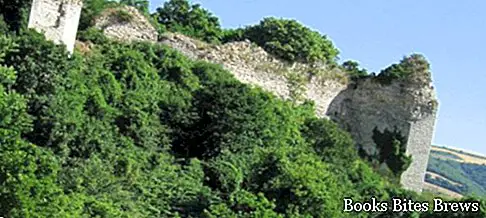What to see in Fossombrone, itinerary including the main monuments and places of interest, including the archaeological park, Cesarini Museum, Pinacoteca Vernarecci, Rocca Malatestiana, Palazzo Ducale, Corte Rossa and Corte Bassa.
Tourist information
Town in the province of Pesaro and Urbino, in the Marche region, Fossombrone is the main center of the middle Metauro valley.
At the top of the inhabited area, on the top of the hill of Sant'Aldebrando, there is the original nucleus of Fossombrone, built between the late ancient age and the early Middle Ages, following the raids of the barbarian peoples, which induced the inhabitants of the nearby Roman city of Forum Sempronii, to take refuge on the high ground.
The territory where the ancient Roman city stood, founded in the second century BC along via Flaminia, it is located in the area of San Martino del Piano, about 2 km, going west, from the current urban center, where it is possible to visit the archaeological park that starts from the area of the Church of San Martino and includes , among other things, the sections of the Flaminia consular route, the remains of private, public and spa buildings, as well as some remains of the ancient city wall.
In the Civic Museum and Pinacoteca Vernarecci, at the Ducal Palace of Fossombrone, which was the summer residence of Federico da Montefeltro, Roman-age materials coming largely from the archaeological area of Forum Sempronii are kept, with important sculptures from the first to the fourth century century AD, epigraphic documents, objects used in the daily life of the time, and others found in burials.
The Municipal Art Gallery preserves a valuable group of paintings by the forsempronese Gianfrancesco Guerrieri (1589-1657).
Fossombrone was given in fief by Otto IV to the Este family, at the end of the thirteenth century it passed to the Church and then to the Malatesta family, who sold it to Federico da Montefeltro, whose lordship, like that of their successors, the Dukes of Della Rovere, was characterized by a remarkable development of arts and commerce.
The Malatesta family in the second half of the fourteenth century enlarged and transformed a previous thirteenth-century fortress, the Malatesta Fortress, of which today the imposing ruins of the bastion remain, located above the citadel that dominates the town.
What see
Under the Citadel, halfway up the slope of the hill of Sant'Aldebrando, stands the Palazzo Ducale known as Corte Alta, seat of the Museum mentioned above, built in the fifteenth century for Federico da Montefeltro, who had an earlier building dating back to the thirteenth century enlarged .
Corso Bar, the main street of the city center, overlooks the Baroque Church of San Filippo, built in the early seventeenth century as a thank you for the birth of Federico Ubaldo, the desired heir of the last Duke of Urbino Francesco Maria Della Rovere, and the Church of Sant'Agostino, of fourteenth-century origin but restored in neoclassical style at the beginning of the nineteenth century.
In via Cesare Battisti there is the Corte Bassa, the sixteenth-century residence of Cardinal Giulio Della Rovere, brother of Duke Guidobaldo II.
Recommended readings- Fossombrone (Marche): what to see
- Marche: Sunday day trips
- Fermo (Marche): what to see
- Marche: what to see among valleys, hills and ancient villages
- Osimo (Marche): what to see
Nearby is the Corte Rossa, another sixteenth-century ducal residence, and among the palaces dating back to the fifteenth and sixteenth centuries, the Municipal one, designed by Filippo Terzi, the Episcopal one and the Silk-Cattabeni one, also known as the Monte di Pietà.
In front of Piazza Dante stands the Church of San Francesco, built at the end of the eighteenth century on a previous Camaldolese church.
In Piazza Martini, at the end of Corso Garibladi, there is the Cathedral dedicated to Sant'Aldebrando, originally born as a Benedictine abbey and rebuilt in the eighteenth century in a Neoclassical style by Cosimo Morelli.
Inside there are paintings by various artists, including Guerrieri and Ridolfi, as well as a sandstone altarpiece made by Domenico Rosselli, located in the sacristy of the canons.
In 1977, the collector Giuseppe Cesarini, bequeathed to the Municipality, together with his own home, an interesting collection of contemporary painting, sculpture and graphics, which we can admire today in his home.
The main part of the collection is represented by the works of the painter Anselmo Bucci, 1887-1955, a native of Fossombrone, and by an important canvas by Giorgio Morandi.
Today the Quadreria Cesarini is an attractive House-Museum, containing the furnishings and works of art present at the time when the notary Giuseppe lived there.




